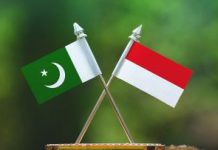In a powerful and meticulously orchestrated display of military might, China recently hosted its largest-ever military parade, commemorating the 80th anniversary of the end of World War II. While ostensibly a historical commemoration, the event was widely interpreted as a vivid statement of China’s rising global influence and a direct message to the West. The most significant aspect of the parade was not the tanks and missiles, but the unprecedented gathering of key world leaders, particularly Russian President Vladimir Putin, North Korean leader Kim Jong Un, and Iranian President Masoud Pezeshkian, who stood alongside Chinese President Xi Jinping. This visible alignment of nations facing sanctions or geopolitical friction with the United States and its allies suggests the possible formation of a new and formidable global bloc.
The parade was a potent showcase of advanced military technology, much of it never before publicly revealed. Among the new armaments were hypersonic missiles designed to neutralize naval carriers, stealth drones, and a new generation of nuclear-capable intercontinental ballistic missiles. The display was a clear signal that China has developed a conventional and nuclear force capable of operating across all domains. For the United States, which relies on its naval power to project influence in the Western Pacific, this new weaponry represents a direct and tangible threat to its strategic dominance. Analysts noted that the parade was less about demonstrating new capabilities and more about sending a clear, strategic message: China is a great nation that “is never intimidated by any bullies,” as Xi Jinping put it, and its military is “unstoppable.”
The presence of Putin, Kim Jong Un, and the Iranian President was arguably the most significant political statement of the event. While their respective nations have long pursued individual agendas, their joint appearance in Beijing cemented a visible alignment against the U.S.-led global order. This is a stark contrast to the notable absence of leaders from major Western powers, who largely boycotted the event. The gathering underscored a growing cohesion among countries seeking to challenge Western influence and create a more multipolar world. The event also highlighted the deepening military cooperation between Moscow and Pyongyang, with North Korea reportedly providing troops and ammunition to Russia in exchange for economic and military assistance.
The parade in Beijing was not just a show of force but a coming-out party for an emerging anti-Western coalition. The shared platform among these leaders, coupled with the reveal of cutting-edge weaponry, sends a clear message to America and its allies that the geopolitical balance is changing. As these nations strengthen their economic and military ties, the prospect of a new Cold War dynamic becomes not just a hypothetical scenario, but a tangible reality that the world must now confront.
While the parade showcased China’s growing military prowess on the world stage, its diplomatic significance was equally striking. The presence of Pakistani Prime Minister Shehbaz Sharif, a close ally, sent a clear message to New Delhi that Beijing’s support for Islamabad remains steadfast and unwavering.
This stands in stark contrast to the conspicuous absence of India’s Prime Minister, Narendra Modi, who instead of attending the military display, opted for a separate diplomatic visit. His decision, seen as a strategic choice to avoid antagonizing key partners, has been met with mixed reactions. While his diplomatic maneuvering is lauded by some as a masterclass in balanced foreign policy, others, particularly on Chinese social media, have questioned the move, suggesting it indicates a reluctance to fully embrace a closer relationship with Beijing. This tale of two prime ministers at a single event highlights the complex and shifting dynamics of regional alliances.

















